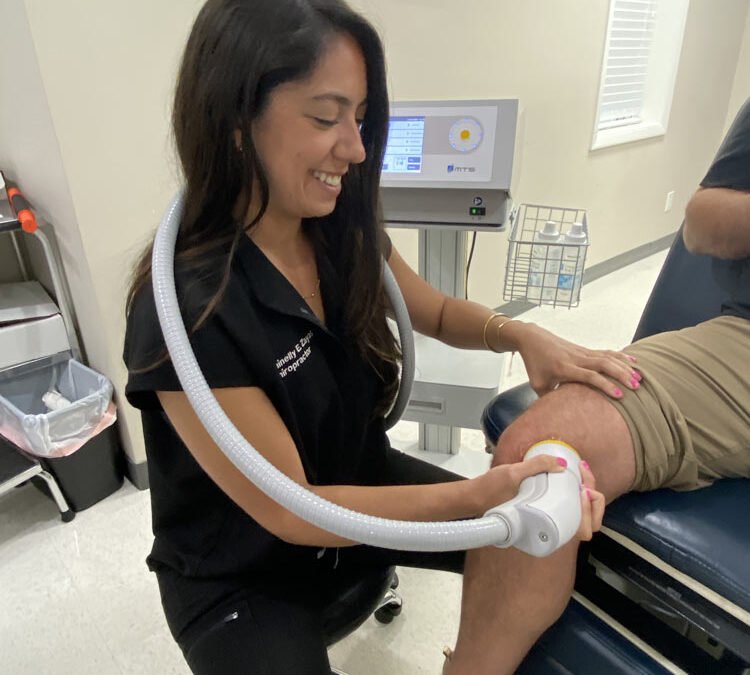Plantar fasciitis, a common yet often debilitating foot condition, affects countless individuals, causing significant pain and discomfort. Traditional treatment methods, while effective for some, do not always provide the desired relief or long-term solutions. By targeting the root causes of plantar fasciitis, Softwave Therapy provides a promising alternative to conventional treatments, potentially reducing pain and improving mobility in affected individuals. This article delves into the mechanics of Softwave Therapy, its advantages over traditional methods, and what patients can expect during the treatment process.
The Basics of Plantar Fasciitis
Plantar fasciitis is a prevalent condition that manifests as pain in the heel and bottom of the foot. It typically occurs due to inflammation of the plantar fascia, a thick band of tissue running across the bottom of the foot, connecting the heel bone to the toes. This condition is especially common in runners, overweight individuals, and those whose jobs require prolonged standing or walking. The pain, often described as a stabbing sensation, is usually most intense with the first steps in the morning or after prolonged periods of rest. As the foot limbers up, the discomfort might decrease, but it might return after long periods of standing or when one stands up after sitting for a long time.
The causes of plantar fasciitis are multifaceted and can include biomechanical issues like flat feet, high arches, or abnormal walking patterns that place extra stress on the plantar fascia. Additionally, age is a factor; the condition is more common in people aged 40 to 60. Other risk factors include certain types of exercise that place a lot of stress on the heel and attached tissue — such as long-distance running, ballet dancing, and aerobic dance. Occupations that keep you on your feet can also contribute, as can obesity, which puts extra stress on the plantar fascia.
The diagnosis of plantar fasciitis typically involves a medical history review and physical examination. Your doctor might check for areas of tenderness in your foot to identify the exact location of the pain and to ensure it’s not caused by a different foot problem. In some cases, imaging tests like X-rays or an MRI might be used to ensure that the heel pain isn’t the result of another condition, such as a fracture or a pinched nerve. Understanding the specific cause of plantar fasciitis is crucial for determining the most effective treatment plan, including the suitability of Softwave Therapy.
Benefits of Softwave Therapy for Plantar Fasciitis
The primary advantage of Softwave Therapy for plantar fasciitis lies in its non-invasive nature, making it a preferred choice for patients seeking an alternative to more aggressive treatments like surgery. Unlike traditional methods, Softwave Therapy utilizes shock waves, which are directed at the affected area to stimulate natural healing processes. This approach can reduce inflammation and promote the repair of damaged tissues, offering a significant reduction in pain and discomfort.
Another key benefit of Softwave Therapy is its ability to provide rapid relief. Many patients report a noticeable decrease in pain after just a few sessions. This quick response is particularly beneficial for those who have been suffering from chronic pain and have found little relief with other treatments. Furthermore, Softwave Therapy can improve mobility in the foot and ankle, enhancing overall function and quality of life. This improvement in mobility is crucial for maintaining an active lifestyle and preventing further complications associated with plantar fasciitis.
In addition to these benefits, Softwave Therapy offers several other advantages:
- Safety and Minimal Side Effects: The therapy is known for its safety profile, with minimal risks of side effects, making it suitable for a wide range of patients.
- No Downtime Required: Unlike surgical procedures, Softwave Therapy does not require any recovery time, allowing patients to continue with their daily activities immediately after treatment.
- Potential Long-Term Relief: Studies suggest that the effects of Softwave Therapy can be long-lasting, providing extended relief from pain and discomfort.
- Enhanced Tissue Regeneration: The therapy stimulates the body’s natural healing processes, potentially leading to more effective and long-term healing of the affected tissues
Softwave therapy is an effective treatment for plantar fasciitis, offering pain relief, enhanced healing, and a high safety profile. Its ability to cater to individual needs further underscores its potential as a go-to solution for those struggling with foot pain.
What to Expect During Softwave Therapy
Softwave therapy is a streamlined and patient-friendly procedure, typically completed in a chiropractic office or a specialized treatment center. When a patient comes in for Softwave therapy for plantar fasciitis, they can expect a straightforward process. Initially, the patient undergoes a brief consultation, where the practitioner assesses their condition and explains the procedure. During the therapy, the patient is comfortably seated or lying down, and the affected foot is positioned for optimal access. The practitioner then applies a gel to the foot, which aids in the transmission of the shock waves.
The core of the Softwave therapy involves a device emitting low-intensity shock waves that penetrate the skin and target the plantar fascia. This process is generally painless, although some patients might experience a mild sensation or discomfort. The duration of the therapy session varies but typically lasts between 15 to 20 minutes. Throughout the session, the practitioner adjusts the intensity of the shock waves according to the patient’s comfort level and the severity of their condition. The goal is to stimulate the area without causing undue discomfort.
Post-treatment, patients often report a sense of immediate relief, although the full effects of the therapy may unfold over several sessions. There is no specific recovery time needed, and patients can usually return to their normal activities shortly after the session. It’s common for the practitioner to provide aftercare advice, which might include stretching exercises or lifestyle modifications to aid in recovery and prevent recurrence. Follow-up appointments are usually scheduled to monitor progress and make any necessary adjustments to the treatment plan. Softwave therapy’s non-invasive nature and quick procedure time make it an appealing option for those seeking effective relief from plantar fasciitis.
Complementary Treatments
While Softwave therapy is an effective standalone treatment for plantar fasciitis, combining it with other complementary therapies can enhance its effectiveness and speed up recovery. One such complementary treatment is physical therapy. Physical therapists can design a program of stretches and exercises specifically tailored to strengthen the foot and ankle muscles, improving flexibility and reducing stress on the plantar fascia. These exercises are particularly beneficial for long-term management and prevention of plantar fasciitis recurrence.
Orthotic supports are another valuable complement to Softwave therapy. Custom orthotics or over-the-counter arch supports can help distribute pressure more evenly across the foot, alleviating stress on the plantar fascia. These supports are especially useful for individuals with structural foot issues or those who stand for long periods. Proper footwear that provides adequate arch support and cushioning can significantly reduce symptoms and prevent further aggravation of the condition.
Chiropractic adjustments and manipulations focus on the alignment of the body, which can be particularly beneficial for patients with plantar fasciitis. Misalignments in the spine or pelvis can contribute to postural imbalances, which in turn place additional strain on the feet. By correcting these imbalances, chiropractic care can reduce undue stress on the plantar fascia, thereby augmenting the effectiveness of Softwave therapy. Additionally, chiropractors can offer specific joint mobilizations for the ankle and foot, further alleviating pain and improving function.
Preventive Measures and Lifestyle Adjustments
Effective management and prevention of plantar fasciitis involve a combination of strategies aimed at reducing stress on the plantar fascia and promoting overall foot health. One of the key preventive measures is wearing proper footwear that provides adequate support, especially for individuals who spend long hours on their feet. Shoes with good arch support and a cushioned sole can significantly decrease the strain on the plantar fascia. For those already experiencing symptoms, orthotic inserts may be recommended to provide additional support and distribute pressure more evenly across the foot.
Exercise and stretching play a crucial role in preventing plantar fasciitis. Regular stretching of the Achilles tendon and calf muscles can increase flexibility, reducing the tension on the plantar fascia. Specific exercises designed to strengthen the foot muscles also help in supporting the arch, further mitigating the risk of plantar fasciitis. Patients are often advised to engage in low-impact activities like swimming or cycling, which provide a good workout without exerting excessive pressure on the feet.
Maintaining a healthy weight is another important factor in preventing plantar fasciitis. Excess weight puts additional stress on the plantar fascia, increasing the likelihood of inflammation and pain. A balanced diet and regular exercise can help in managing weight effectively. Additionally, individuals should be mindful of their standing and walking posture, as poor posture can lead to uneven weight distribution on the feet, exacerbating the risk of developing plantar fasciitis. Through a combination of supportive footwear, targeted exercises, weight management, and posture awareness, individuals can significantly reduce their risk of experiencing plantar fasciitis and ensure healthier foot function.
Contact Rittenhouse Square Chiropractic
For those seeking comprehensive care and effective treatment for plantar fasciitis, Rittenhouse Square Chiropractic is a valuable resource. Our team of experienced chiropractors and healthcare professionals is dedicated to providing personalized treatment plans, including Softwave therapy and other complementary chiropractic techniques, tailored to meet each patient’s unique needs. Our staff is committed to helping you achieve relief from foot pain and guiding you toward a path of improved health and well-being. Contact us today to take the first step in your journey to recovery and experience the benefits of our holistic and patient-centered approach to chiropractic care.

